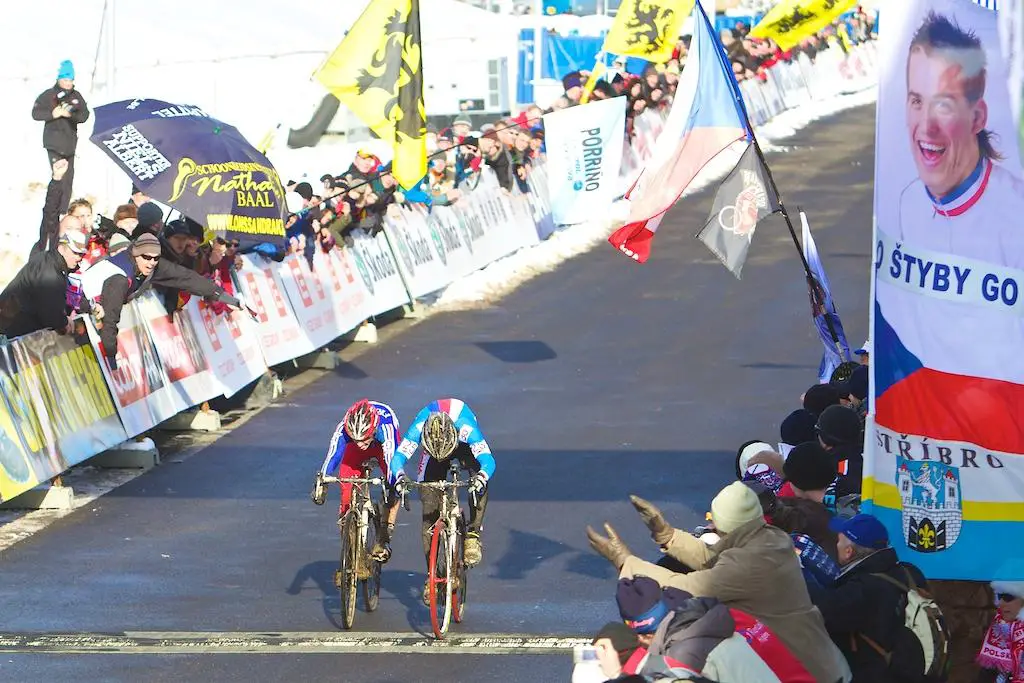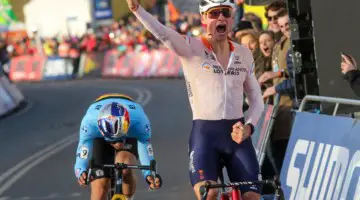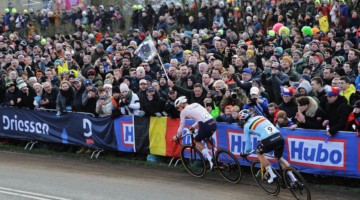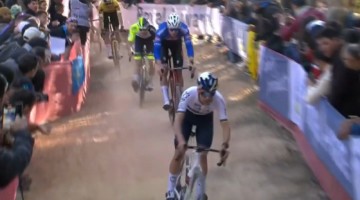It’s been the year of the ‘crosser. Sure we’re biased, but in international racing, the “offseason” exploits of Mathieu van der Poel, Wout van Aert, Marianne Vos and others have put cyclocross racing on the map for roadies and mountain bike racers alike.
This year’s Tour de France is no exception, with no less than four UCI Cyclocross World Championships medalists winning five stages of the Le Tour. Even more impressive perhaps is the fact that as of Stage 15, a Cyclocross Worlds medalist has worn the green jersey every single stage and worn the yellow jersey for all but two stages. A Cyclocross Worlds medalist has worn the white, green or yellow jersey for a whopping total of 31 days this year, and we’re only two-thirds into the Tour.
Three-time World Champ Wout van Aert of Jumbo Visma, thanks to his recent cyclocross success and stellar Tour rookie campaign with two stage victories and three days in the white jersey, may have gotten much of the attention, but three other Worlds medalists have also had impressive showings, without as much cyclocross-related hype or crash misfortune.
Van Aert’s teammate, 2013 U23 World Champion Mike Teunissen, took the opening stage in a sprint and also shared in the team’s time trial victory the next day.
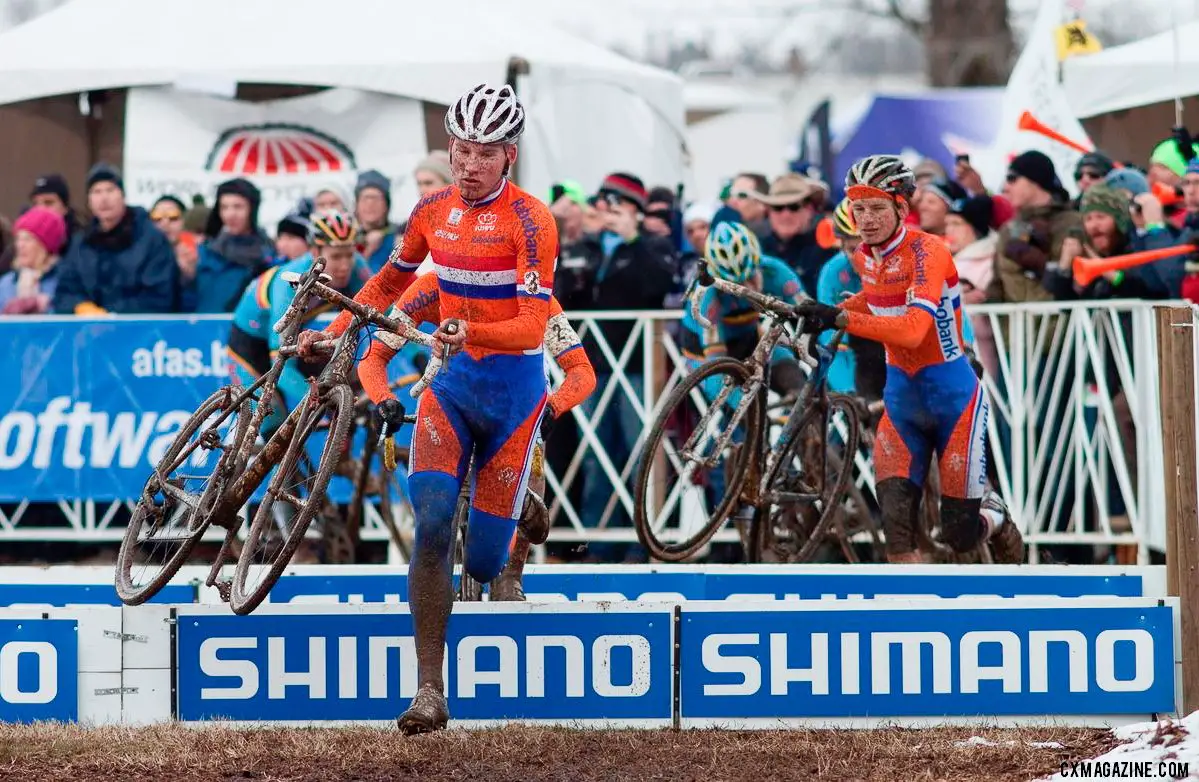
Mike Teunissen leading the chase of Bosmans at the 2013 UCI Cyclocross World Championships in Louisville. © Cyclocross Magazine
Teunissen also enjoyed owning both the yellow and green jerseys for Stage 1 and Stage 2.
While superstar Peter Sagan gets all the attention, winning Stage 5 and making all other sprinters green with envy, some forget his silver medal-winning ride at the 2008 Cyclocross World Championships behind the already-retired Arnold Jouffroy of France.
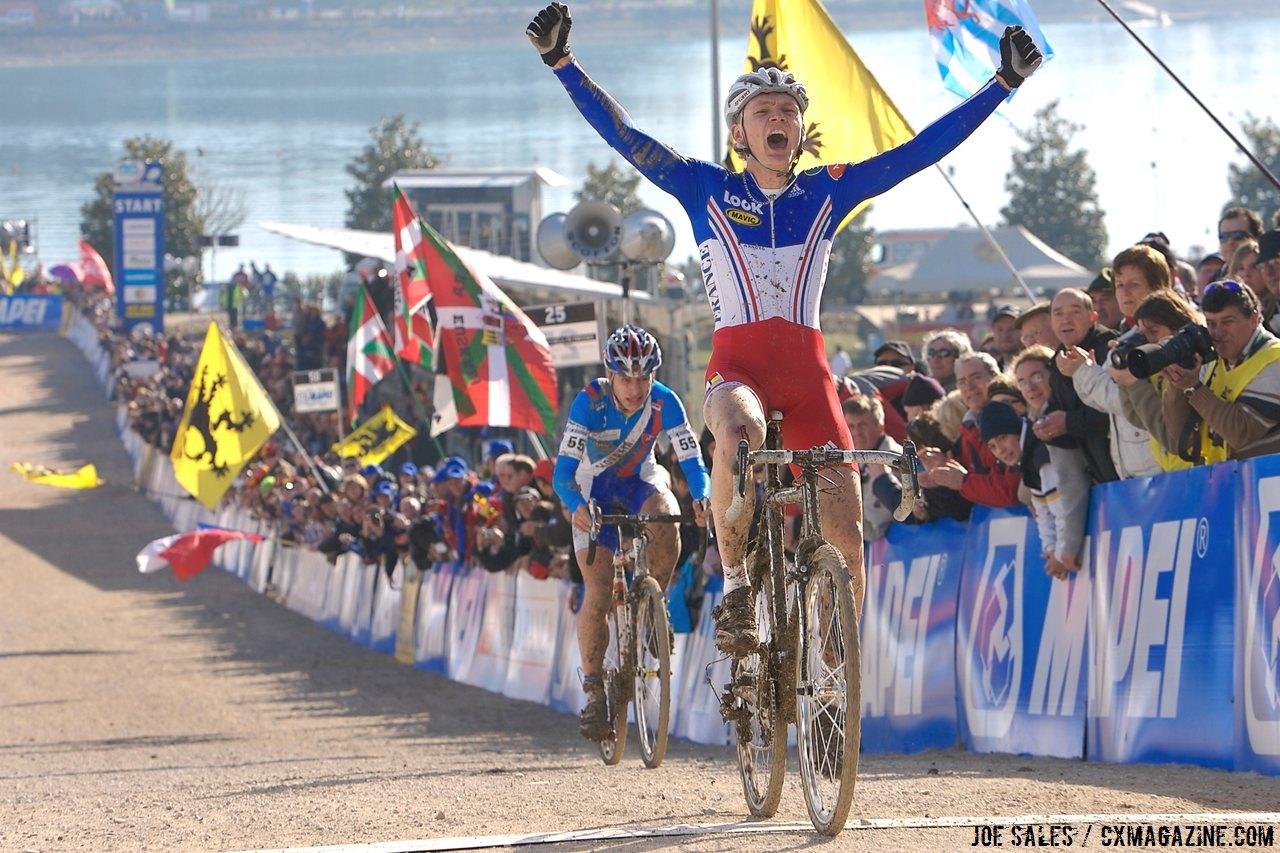
Arnaud Jouffroy holds off a sprinting Peter Sagan in the Junior Men’s race at the 2008 Cyclocross World Championships in Treviso, Italy. © Joe Sales / Cyclocross Magazine
Sagan, thanks to Teunissen’s inability to wear two jerseys at once, has worn the green jersey since Stage 2.
However, it’s the 2010 Junior Worlds Silver Medalist Julian Alaphilippe who might take the crown as a recent cyclocrosser to spend the most days in yellow (if you don’t count this attempt by 14-day yellow jersey wearer Bradley Wiggins as enough to call him a ’crosser).

Julian Alaphilippe finished second to Tomas Paprstka and ahead of Emiel Dolfstra at the 2010 UCI Cyclocross World Championship in Tabor. © B. Hazen / Cyclocross Magazine
While he may be fighting to keep that jersey as you read this, the surprising French star has bunnyhopped his way from Tour stage winner to overall contender, shouldering his country’s hopes along the way.
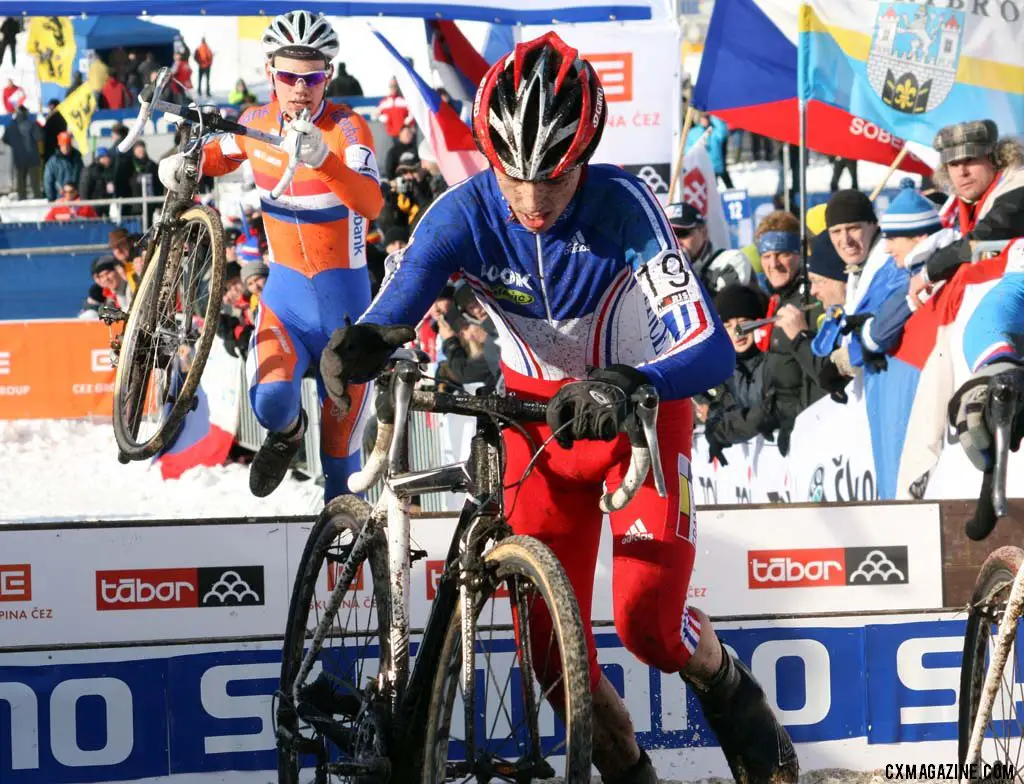
Julian Alaphilippe on his way to a silver medal at the 2010 Cyclocross World Championships in Tabor. © B. Hazen / Cyclocross Magazine
Alaphilippe was a successful cyclocrosser long before he became a household name for NBC Sports viewers. The Frenchman won UCI Cyclocross World Cups as a Junior and U23, missed a world championship rainbow jersey by a tire width in a photo finish and was France’s two-time U23 National Champion.
Some of us got to see the future yellow jersey wearer in Louisville. Alaphilippe was chasing Teunissen, Wietse Bosman, Wout van Aert and American Zach McDonald through the soon-to-be-flooded paths of Eva Bandman park. Alaphilippe would finish 22nd at the 2013 World Championships before succumbing to the talons of road racing.
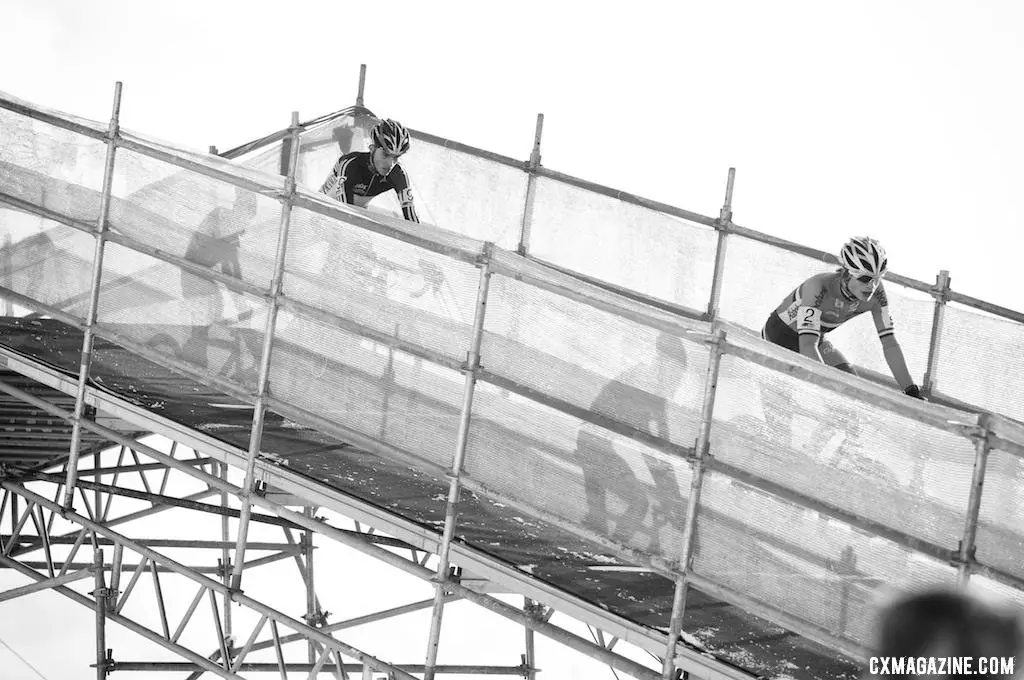
Julian Alaphilippe (#19) follows David van der Poel. Tabor 2010 Junior Cyclocross World Championships. © Joe Sales / Cyclocross Magazine
We’d of course like to credit cyclocross with all four racers’ success, and there are plenty of reasons to think the explosive, short-duration offroad races only helped in launching their road careers. The combination of bike handling skills, power and explosiveness required by cyclocross certainly helps create well-rounded, versatile athletes who can sprint, descend and tolerate handlebar-to-handlebar action.
There’s also a good argument that having young racers focus on the shorter distances and reduced training hours (compared to road) helps avoid the early career burnout that we’ve seen with many promising cyclists.
Obviously, we’re talking about world-class athletes who would likely succeed at any form of cycling. Still, cyclocross should get plenty of credit, as their early cyclocross success caught the eye and appetite of a hungry road team and set them down a path for future Tour de France success.
Who will be next, and will they continue to race cyclocross?
See more 2019 Tour de France coverage from our cyclocross mud-covered lens here.













